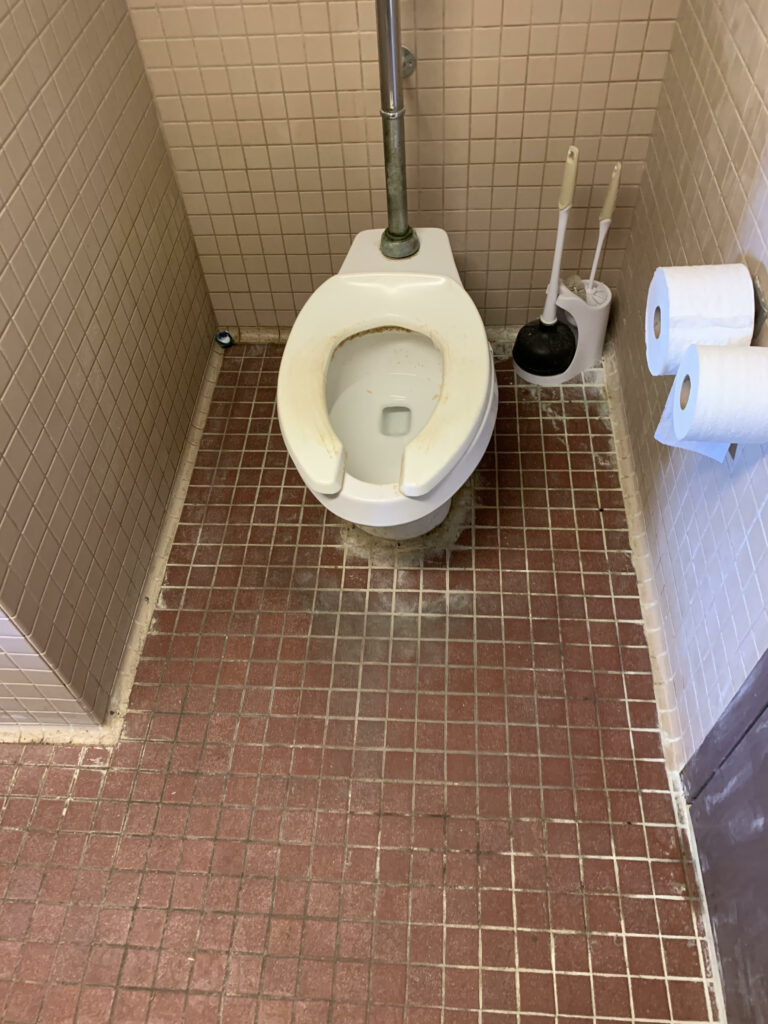
Fort Hood, TX – Soldiers assigned to 3rd Cavalry Regiment (3CR) at Fort Hood, Texas, have been living in dilapidated barracks where black mold has not only taken over the common areas that are visible to those who enter the barracks, but runs throughout the buildings’ ventilation ducts as well.

Eight of the buildings within the 3CR footprint are affected with systemic issues. Officials from the Department of the Army and III Corps toured some of the buildings last week and were made aware of the issues plaguing these blocks of buildings. It was an impromptu tour, resulting in most of the affected areas not being seen or addressed. While viewing the rooms, one top official suggested the troops “re-tile the showers” themselves as a fix to the mold issue within.

When we spoke to soldiers in 3CR, they said, “[they] should have seen the basement where rats are eating our equipment, or the motorpool where we have entire rooms sealed off due to rats.”
Mold grows where there is moisture and little airflow. The barracks bathrooms in these buildings are interior rooms with two doors on each side leading into actual living space for up to two soldiers each. Four soldiers share a tiled stand-up shower and a single toilet. In order to keep moisture out of the showers, it would require the four occupants to keep both doors open to allow air flow and ventilation. However, soldiers living together are usually not from the same Troop, or even the same Squadron, and theft is a big issue on Fort Hood and throughout the Army at large. This raises the broader question of safety within these barracks and Fort Hood as a whole, which III Corps is attempting to address this week during their Phantom Warrior Week initiative.

Addressing mold takes more than just bleach and water, requiring workers to determine the source of moisture in the room and remove it, often tearing down entire walls with it. Once out, the room must stay aerated and as free of moisture as possible. The barracks buildings in question also have flat roofs with gutters tacked on, causing leaking ceilings for the third floor occupants and more moisture in an already humid central Texas climate.

Another issue that often affects the upkeep of the buildings is a unit deployment. Regular maintenance on the HVAC and plumbing is not conducted, which causes mold to grow rapidly. The Fort Hood Department of Public Works (DPW) is in charge of maintaining all buildings on post but frequently neglects fixing issues in 3CR’s buildings because they are slated for renovation.

$100 million was earmarked for renovations on Fort Hood for fiscal year 2020. While many of the buildings in the Regiment have already been renovated, there are still soldiers from all but two of 3CR’s squadrons that occupy the older barracks built in the 1970s. Renovations to these buildings aren’t projected to begin until FY 2023. The average contract for an enlisted soldier is four years. This means many troops would spend their entire enlistment living in buildings containing health hazards, such as mold spores which affect the respiratory system, rats which spread disease and destroy equipment, and rooms that can’t be properly secured, inviting theft of personal belongings and military equipment.

Personnel in 3CR told us, “any soldier that belongs to the unit knows if you are assigned rooms there, then it’s game over. There are SOME things that these guys can do to increase the quality of living and make it not so bad, but at the end of the day, if you give me a choice between these buildings and an abandoned mortar proof CHU in Tarin Kot Afghanistan with 2 squads in bunk beds, I’m choosing Afghanistan all day. These buildings are sad and these guys deserve more.”

The command teams have worked hard to make the best out of what they have, but it’s not enough to combat the elements. Big Army earmarks funds for the fiscal year, and installations have to make due with what they’re given. This is not a new issue, however.
In 2008, a video of barracks conditions on Fort Bragg went viral after a father filmed his son’s barracks upon returning from deployment. A spot check by Associated Press reporters during the week the news broke on Fort Bragg found many barracks plagued by recurring problems with mold, mildew, plumbing and wiring. These are the same issues plaguing barracks on many installations now, to include Fort Hood.

It’s hard to believe funds don’t exist when the DOD is responsible for $125 billion in administrative waste over five years. Fort Hood has been given $470 million to renovate barracks over a 6 year period, and while this may seem like a lot, the yearly breakdown of those funds is only 0.01% of the annual operating budget for the DOD. Fort Hood is the largest military installation in the world, and when you factor in the lack of investment for infrastructure, it is apparent that enough is not being done to provide adequate living quarters for those who serve our country.

